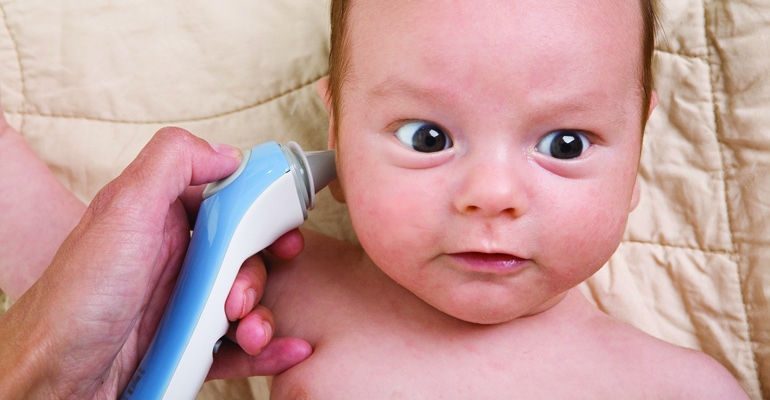The American Academy of Pediatrics recommends hearing screening for all newborns and an eye exam in the first six months of life — for good reason. Poor prenatal care or illness during pregnancy, premature birth, extended use of oxygen after birth, infection, jaundice, and genetic conditions are the most common causes of vision and hearing problems. If left untreated, such problems can lead to serious delays in language development or long-term visual impairment. When you adopt a newborn or infant, what should you be watching and listening for?
Vision Screening
Your child’s primary care physician should check his vision as a newborn (to look for infections, cataracts, and eye defects), at six months (to check for alignment of the eyes), at three to four years old (to check vision and alignment), and annually from age five. He should refer you to a specialist if any of the exams show abnormalities.
There are many signs that indicate healthy vision development. Possible red flags include squinting, closing one eye to see better, fluttering or bulging eyes, or repeated infections. The most common vision problems include strabismus, or crossed eyes, meaning that one or both eyes turn inward. This occurs in four percent of children, and may be caused by tight eye muscles or excessive farsightedness. Early detection of this condition is important to prevent double vision. Amblyopia, or lazy eye, happens in two percent of children. Lazy eye causes the vision in the weaker, turned-in eye to “switch off,” and can lead to permanent vision loss in that eye.
Parents may have a harder time detecting pseudostrabismus, a condition that affects children whose eyes appear to be crossed, but aren’t, and who have a flat nasal bridge (common in children of African and Asian descent).
Hearing Screening
More than 65 percent of children born in the U.S. are screened for hearing loss as a routine matter before they leave the hospital. If you don’t receive a record of this screening, or if you adopted internationally, schedule an examination as soon as possible. Observe whether your child reacts to loud noises as an infant and turns to find the source of a sound by six months. Early detection of hearing loss is crucial to language development. (If your child is older, and has language or socialization delays, make sure he’s tested.)
Even if your child passes the newborn screen, your pediatrician should continue to monitor hearing in cases of premature birth, jaundice, abnormalities in the ears, face, or skull, or if there’s a birth family history of hearing loss. Children should be screened annually from age five.
Untreated ear infections can lead to fluid build-up in the middle ear, causing conductive hearing loss, which muffles sounds. Most pediatricians recommend a hearing exam if a child has had repeated ear infections or middle ear fluid for more than three months. Conductive hearing loss is usually reversible, and is treated by surgically inserting tubes into the eardrum to permit ventilation. Ear infections should taper off as a child’s Eustachian tube matures. Nerve damage or inner ear problems may cause permanent hearing loss, but even this can be remedied with hearing aids or cochlear implants, surgically implanted devices that stimulate the auditory nerve. Children who have these implants done at an early age, and who receive speech therapy, have an excellent chance of normal speech.


